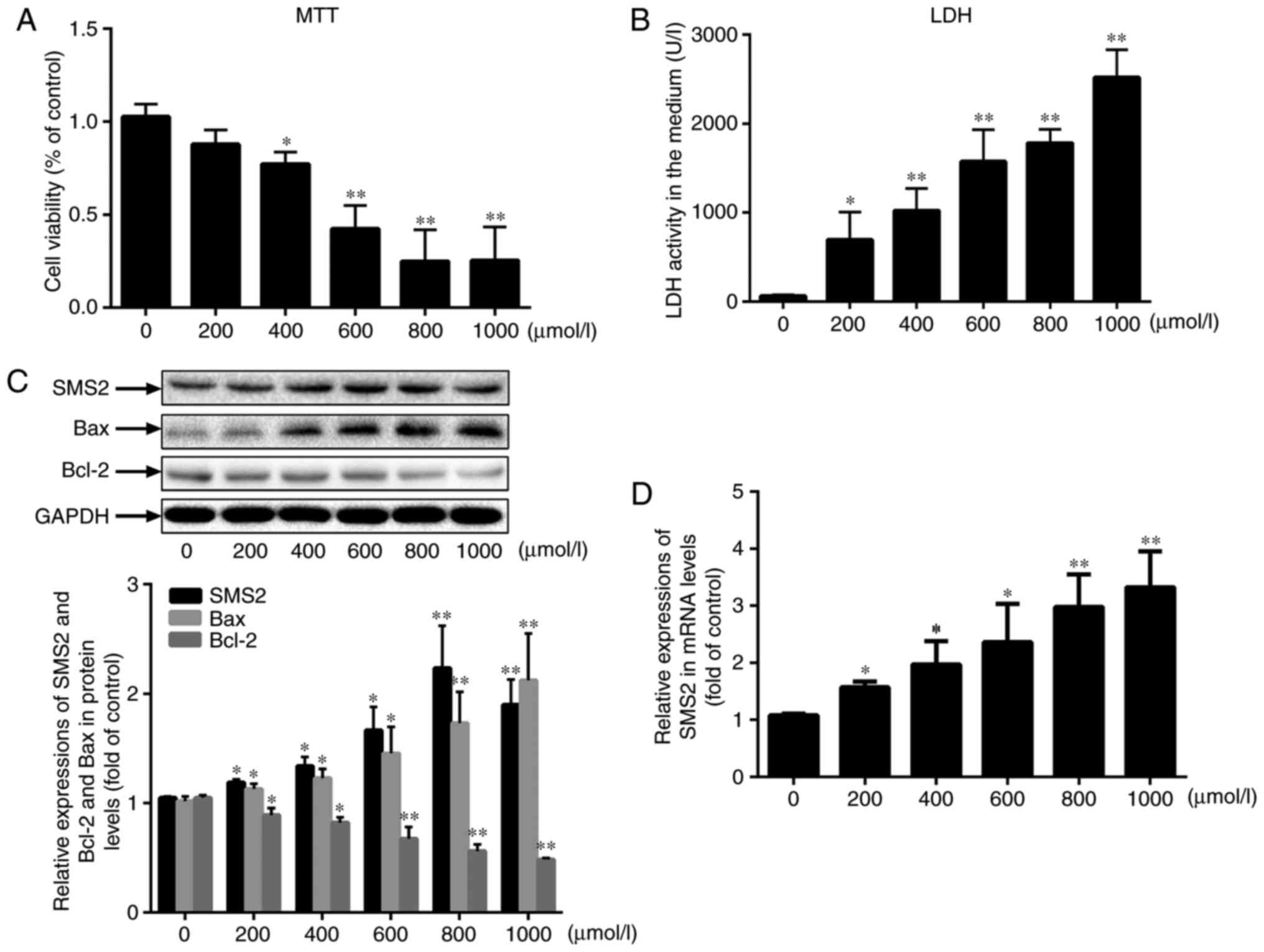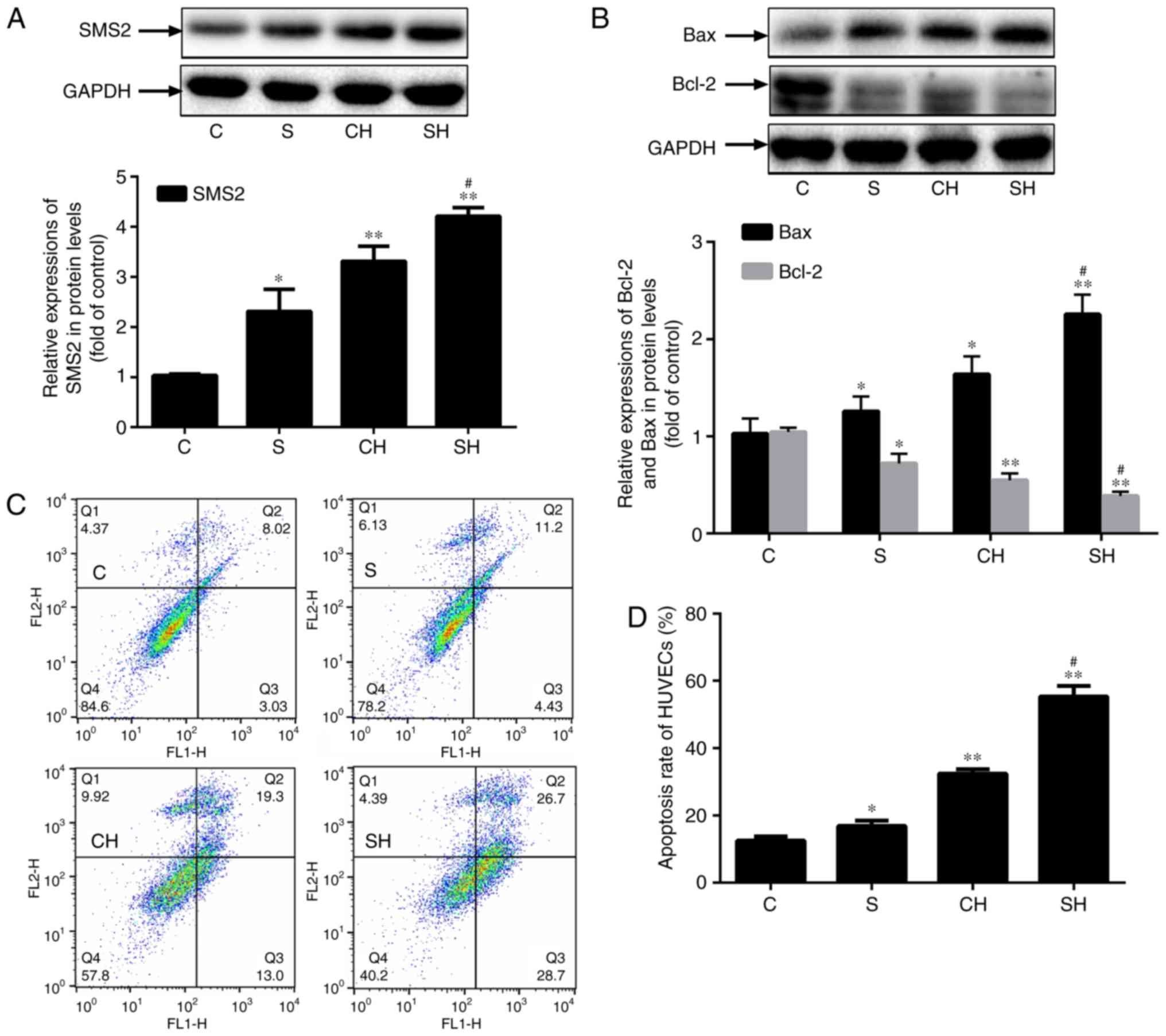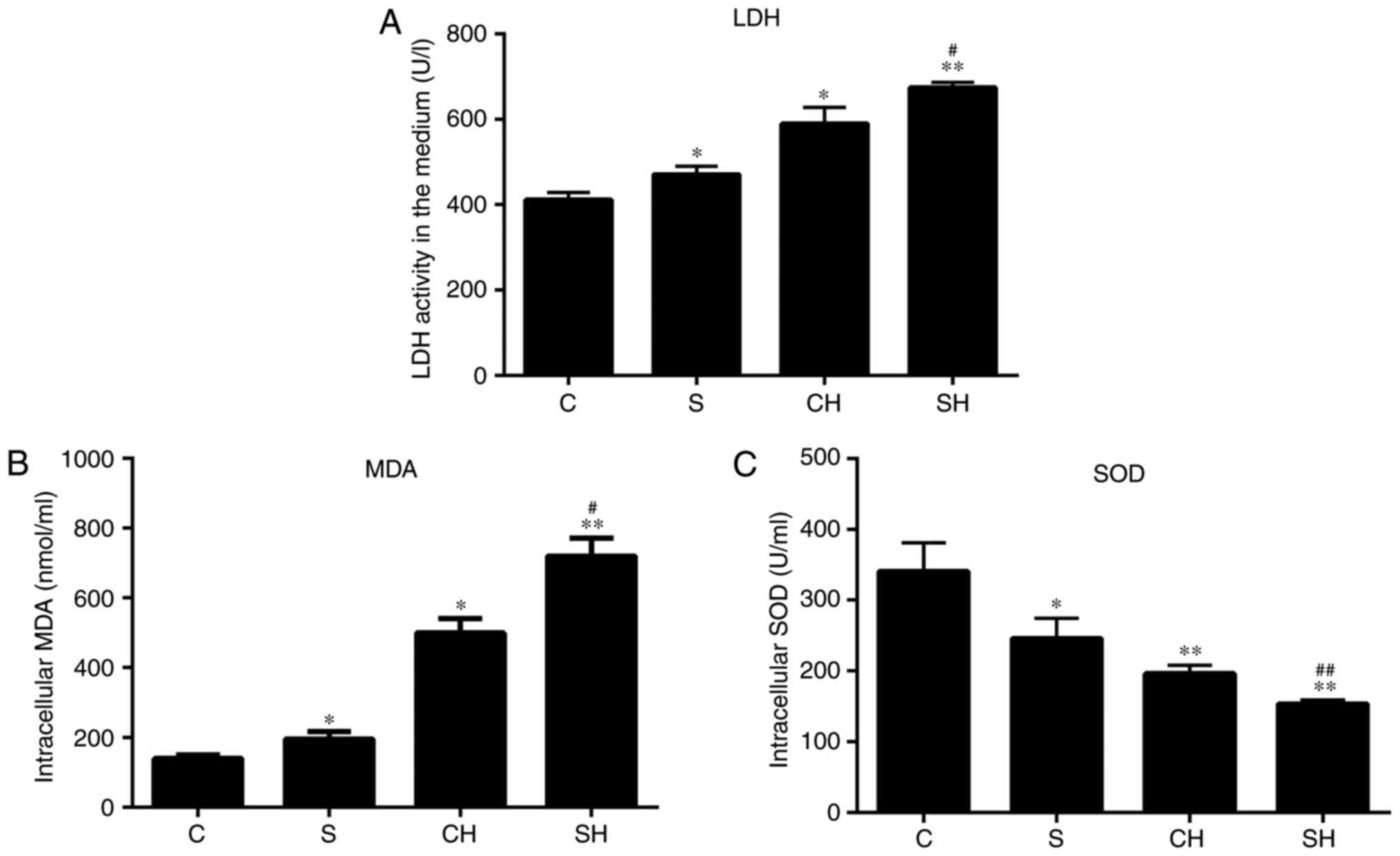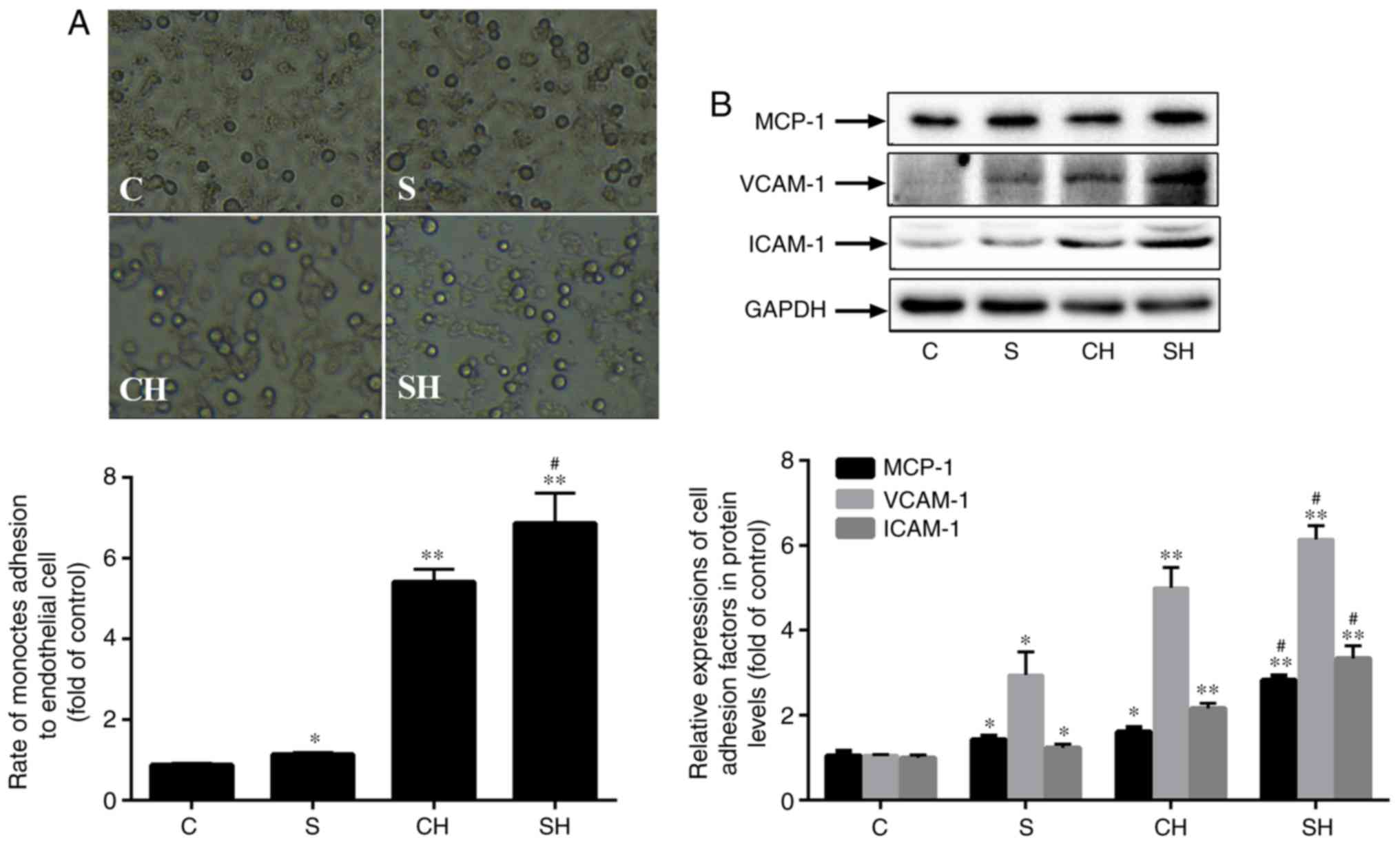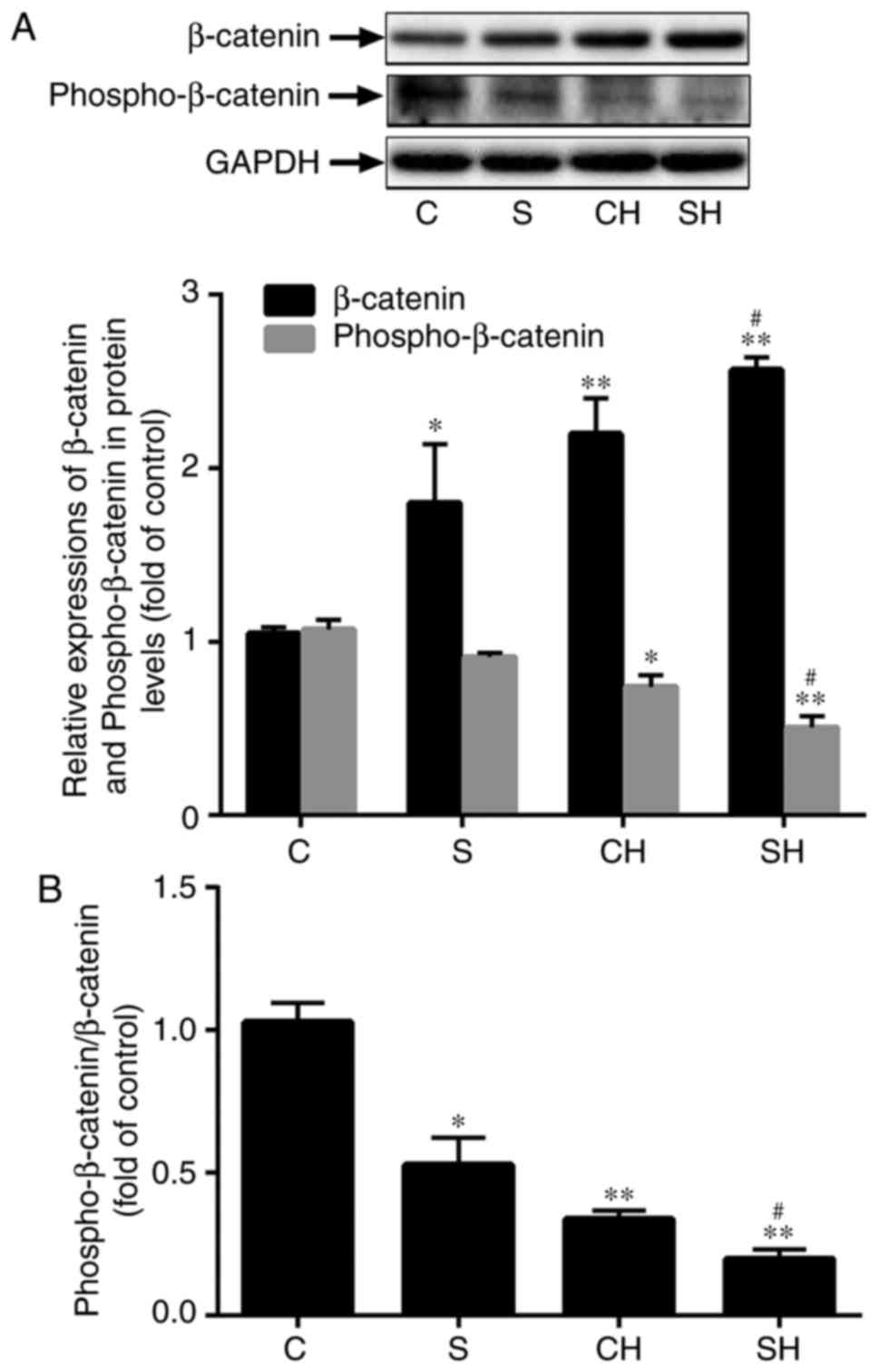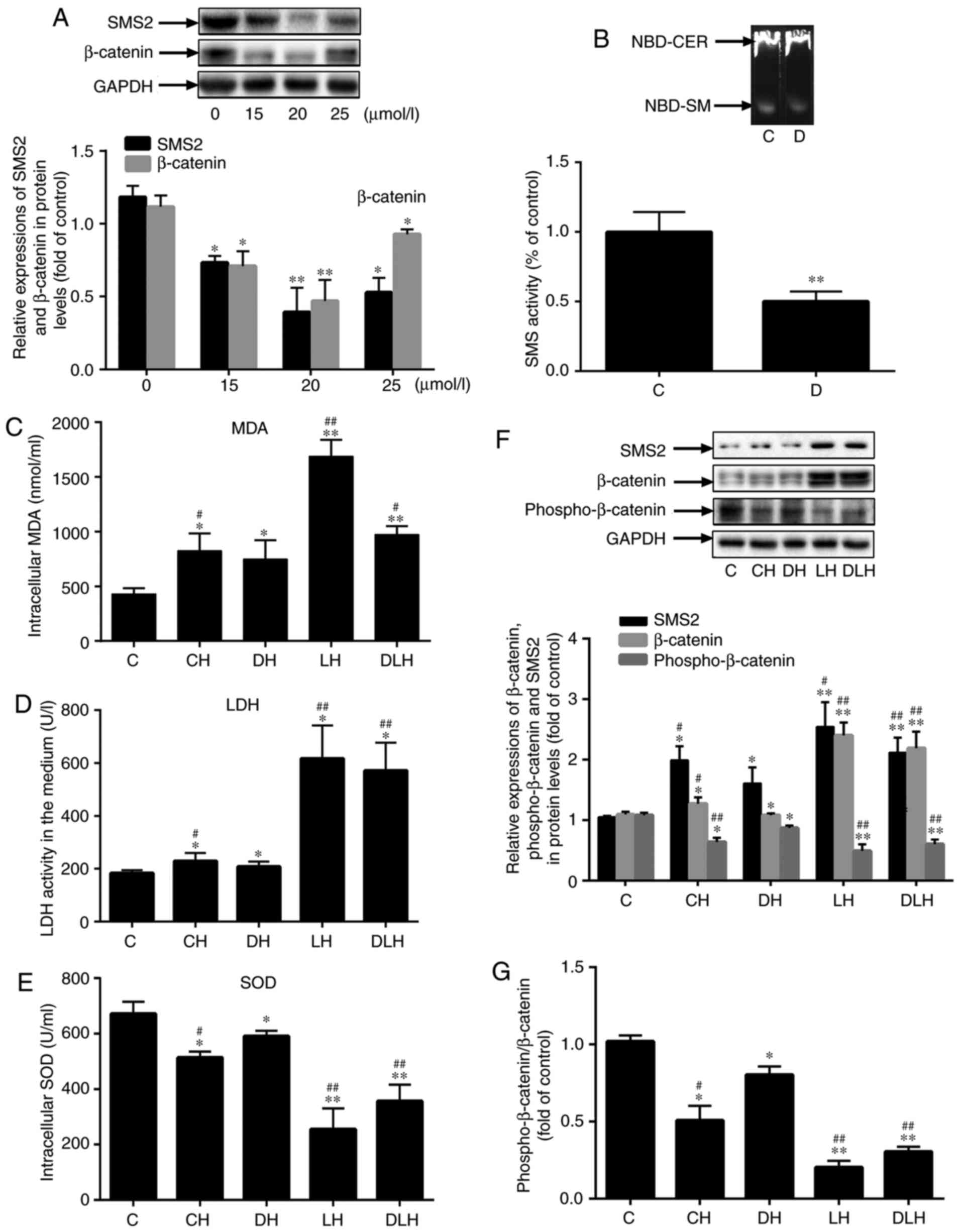|
1
|
Luscher TF, Landmesser U, von Eckardstein
A and Fogelman AM: High-density lipoprotein: Vascular protective
effects, dysfunction, and potential astherapeutic target. Circ Res.
114:171–182. 2014. View Article : Google Scholar
|
|
2
|
Otsuka F, Finn AV, Yazdani SK, Nakano M,
Kolodgie FD and Virmani R: The importance of the endothelium in
atherothrombosis and coronary stenting. Nat Rev Cardiol. 9:439–453.
2012. View Article : Google Scholar : PubMed/NCBI
|
|
3
|
Minuz P, Fava C, Vattemi G, Arcaro G,
Riccadonna M, Tonin P, Meneguzzi A, Degan M, Guglielmi V, Lechi A
and Tomelleri G: Endothelial dysfunction and increased oxidative
stress in mitochondrial diseases. Clin Sci (Lond). 122:289–297.
2012. View Article : Google Scholar
|
|
4
|
Zhang M, Pan H, Xu Y, Wang X, Qiu Z and
Jiang L: Allicin decreases lipopolysaccharide-induced oxidative
stress and inflammation in human umbilical vein endothelial cells
through suppression of mitochondrial dysfunction and activation of
nrf2. Cell Physiol Biochem. 41:2255–2267. 2017. View Article : Google Scholar : PubMed/NCBI
|
|
5
|
Wu D, Li D, Liu Z, Liu X, Zhou S and Duan
H: Role and underlying mechanism ofSPATA12in oxidative damage.
Oncol Lett. 15:3676–3684. 2018.PubMed/NCBI
|
|
6
|
Nohl H, Kozlov AV, Gille L and Staniek K:
Cell respiration and formation of reactive oxygen species: Facts
and artefacts. Biochem Soc Trans. 31:1308–1311. 2003. View Article : Google Scholar : PubMed/NCBI
|
|
7
|
Dong L, Watanabe K, Itoh M, Huan CR, Tong
XP, Nakamura T, Miki M, Iwao H, Nakajima A, Sakai T, et al:
CD4+ T-cell dysfunctions through the impaired lipid
rafts ameliorate concanavalin A-induced hepatitis in sphingomyelin
synthase 1-knockout mice. Int Immunol. 24:327–337. 2012. View Article : Google Scholar : PubMed/NCBI
|
|
8
|
Adada M, Luberto C and Canals D:
Inhibitors of the sphingomyelin cycle: Sphingomyelin synthases and
sphingomyelinases. Chem Phys Lipids. 197:45–59. 2016. View Article : Google Scholar
|
|
9
|
Yeang C, Ding T, Chirico WJ and Jiang XC:
Subcellular targeting domains of sphingomyelin synthase 1–2. Nutr
Metab. 8:892011. View Article : Google Scholar
|
|
10
|
Jiang XC, Paultre F, Pearson TA, Reed RG,
Francis CK, Lin M, Berglund L and Tall AR: Plasma sphingomyelin
level as a risk factor for coronary artery disease. Arterioscler
Thromb Vasc Biol. 20:2614–2618. 2000. View Article : Google Scholar : PubMed/NCBI
|
|
11
|
Schlitt A, Blankenberg S, Yan D, Von
Gizycki H, Buerke M, Werdan K, Bickel C, Lackner KJ, Meyer J,
Rupprecht HJ and Jiang XC: Further evaluation of plasma
sphingomyelin levels as a risk factor for coronary artery disease.
Nutr Metab (Lond). 3:52006. View Article : Google Scholar
|
|
12
|
Park TS, Panek RL, Rekhter MD, Mueller SB,
Rosebury WS, Robertson A, Hanselman JC, Kindt E, Homan R and
Karathanasis SK: Modulation of lipoprotein metabolism by inhibition
of sphingomyelin synthesis in apoe knockout mice. Atherosclerosis.
189:264–272. 2006. View Article : Google Scholar : PubMed/NCBI
|
|
13
|
Mou D, Yang H, Qu C, Chen J and Zhang C:
Pharmacological activation of peroxisome proliferator-activated
receptor {delta increases sphingomyelin synthase activity in THP-1
macrophage-derived foam cell. Inflammation. 39:1538–1546. 2016.
View Article : Google Scholar : PubMed/NCBI
|
|
14
|
Dong J, Liu J, Lou B, Li Z, Ye X, Wu M and
Jiang XC: Adenovirus-mediated overexpression of sphingomyelin
synthases 1 and 2 increases the atherogenic potential in mice. J
Lipid Res. 47:1307–1314. 2006. View Article : Google Scholar : PubMed/NCBI
|
|
15
|
Yan N, Ding T, Dong J, Li Y and Wu M:
Sphingomyelin synthase overexpression increases cholesterol
accumulation and decreases cholesterol secretion in liver cells.
Lipids Health Dis. 10:462011. View Article : Google Scholar : PubMed/NCBI
|
|
16
|
Zhou Q, Luo A and Kummerow FA: Lovastatin
reversed the enhanced sphingomyelin caused by 27-hydroxycholesterol
in cultured vascular endothelial cells. Biochem Biophys Rep.
5:127–133. 2015.PubMed/NCBI
|
|
17
|
de Jaime-Soguero A, Abreu de Oliveira WA
and Lluis F: The pleiotropic effects of the canonical wnt pathway
in early development and pluripotency. Genes Bales. 9:932018.
View Article : Google Scholar
|
|
18
|
Nusse R and Clevers H: Wnt/β-catenin
signaling, disease, and emerging therapeutic modalities. Cell.
169:985–999. 2017. View Article : Google Scholar : PubMed/NCBI
|
|
19
|
Foulquier S, Daskalopoulos EP, Lluri G,
Hermans KCM, Deb A and Blankesteijn WM: WNT signaling in cardiac
and vascular disease. Pharmacol Rev. 70:68–141. 2018. View Article : Google Scholar
|
|
20
|
Badimon L and Borrell-Pages M: Wnt
signaling in the vessel wall. Curr Opin Hematol. 24:230–239. 2017.
View Article : Google Scholar : PubMed/NCBI
|
|
21
|
Christman MA II, Goetz DJ, Dickerson E,
McCall KD, Lewis CJ, Benencia F, Silver MJ, Kohn LD and Malgor R:
Wnt5a is expressed in murine and human atherosclerotic lesions. Am
J Physiol Heart Circ Physiol. 294:H2864–H2870. 2008. View Article : Google Scholar : PubMed/NCBI
|
|
22
|
Malgor R, Bhatt PM, Connolly BA, Jacoby
DL, Feldmann KJ, Silver MJ, Nakazawa M, McCall KD and Goetz DJ:
Wnt5a, TLR2 and TLR4 are elevated in advanced human atherosclerotic
lesions. Inflamm Res. 63:277–285. 2014. View Article : Google Scholar :
|
|
23
|
Tsaousi A, Mill C and George SJ: The Wnt
pathways in vascular disease: Lessons from vascular development.
Curr Opin Lipidol. 22:350–357. 2011. View Article : Google Scholar : PubMed/NCBI
|
|
24
|
Lee DK, Nathan Grantham R, Trachte AL,
Mannion JD and Wilson CL: Activation of the canonical
Wnt/beta-Catenin pathway enhances monocyte adhesion to endothelial
cells. Biochem Biophys Res Commun. 347:109–116. 2006. View Article : Google Scholar : PubMed/NCBI
|
|
25
|
Ma S, Yao S, Tian H, Jiao P, Yang N, Zhu P
and Qin S: Pigment epithelium-derived factor alleviates endothelial
injury by inhibiting Wnt/β-Catenin pathway. Lipids Health Dis.
16:312017. View Article : Google Scholar
|
|
26
|
Quasnichka H, Slater SC, Beeching CA,
Boehm M, Sala-Newby GB and George SJ: Regulation of smooth muscle
cell proliferation by beta-catenin/T-cell factor signaling involves
modulation of cyclin D1 and p21 expression. Circ Res. 99:1329–1337.
2006. View Article : Google Scholar : PubMed/NCBI
|
|
27
|
Tsaousi A, Williams H, Lyon CA, Taylor V,
Swain A, Johnson JL and George SJ: Wnt4/β-Catenin signaling induces
VSMC proliferation and is associated with intimal thickening. Circ
Res. 108:427–436. 2011. View Article : Google Scholar : PubMed/NCBI
|
|
28
|
Luo S, Pan Z, Liu S, Yuan S and Yan N:
Sphingomyelin synthase 2 overexpression promotes cisplatin-induced
apoptosis of HepG2 cells. Oncol Lett. 15:483–488. 2018.PubMed/NCBI
|
|
29
|
Chengye Z, Daixing Z, Qiang Z and Shusheng
L: PGC-1-related coactivator (PRC) negatively regulates endothelial
adhesion of monocytes via inhibition of NF κB activity. Biochem
Biophys Res Commun. 439:121–125. 2013. View Article : Google Scholar : PubMed/NCBI
|
|
30
|
Song Z, Liu Y, Hao B, Yu S, Zhang H, Liu
D, Zhou B, Wu L, Wang M, Xiong Z, et al: Ginsenoside Rb1 prevents
H2O2-induced HUVEC senescence by stimulating sirtuin-1 pathway.
PLoS One. 9:e1126992014. View Article : Google Scholar : PubMed/NCBI
|
|
31
|
Livak KJ and Schmittgen TD: Analysis of
relative gene expression data using real-time quantitative PCR and
the 2(-Delta Delta C(T)) method. Methods. 25:402–408. 2001.
View Article : Google Scholar
|
|
32
|
Zhang D, Wang Y, Dai Y, Wang J, Suo T, Pan
H and Liu H, Shen S and Liu H: Downregulation of RIP140 in
hepatocellular carcinoma promoted the growth and migration of the
cancer cells. Tumour Biol. 36:2077–2085. 2015. View Article : Google Scholar
|
|
33
|
Lou B, Dong J, Li Y, Ding T, Bi T, Li Y,
Deng X, Ye D and Jiang XC: Pharmacologic inhibition of
sphingomyelin synthase (SMS) activity reduces apolipoprotein-B
secretion from hepatocytes and attenuates endotoxin-mediated
macrophage inflammation. PLoS One. 9:e1026412014. View Article : Google Scholar : PubMed/NCBI
|
|
34
|
Duan J, Yu Y, Li Y, Yu Y, Li Y, Zhou X,
Huang P and Sun Z: Toxic effect of silica nanoparticles on
endothelial cells through DNA damage response via chk1-dependent
G2/M checkpoint. PLoS One. 8:e620872013. View Article : Google Scholar : PubMed/NCBI
|
|
35
|
Arlian LG, Elder BL and Morgan MS: House
dust mite extracts activate cultured human dermal endothelial cells
to express adhesion molecules and secrete cytokines. J Med Entomol.
46:595–604. 2009. View Article : Google Scholar : PubMed/NCBI
|
|
36
|
Han R, Tang F, Lu M, Xu C, Hu J, Mei M and
Wang H: Astragalus polysaccharide ameliorates
H2O2-induced human umbilical vein endothelial
cell injury. Mol Med Rep. 15:4027–4034. 2017. View Article : Google Scholar : PubMed/NCBI
|
|
37
|
Wang YK, Hong YJ, Wei M, Wu Y, Huang ZQ,
Chen RZ and Chen HZ: Curculigoside attenuates human umbilical vein
endothelial cell injury induced by H2O2. J
Ethnopharmacol. 132:233–239. 2010. View Article : Google Scholar : PubMed/NCBI
|
|
38
|
Liu M, Yu P, Jiang H, Yang X, Zhao J, Zou
Y and Ge J: The essential role of Pin1 via NF-κB signaling in
vascular inflammation and atherosclerosis in ApoE−/−
mice. Int J Mol Sci. 18:E6442017. View Article : Google Scholar
|
|
39
|
Liu M, Yu Y, Jiang H, Zhang L, Zhang PP,
Yu P, Jia JG, Chen RZ, Zou YZ and Ge JB: Simvastatin suppresses
vascular inflammation and atherosclerosis in ApoE−/−
mice by downregulating the HMGB1-RAGE axis. Acta Pharmacol Sin.
34:830–836. 2013. View Article : Google Scholar : PubMed/NCBI
|
|
40
|
Chen Y and Cao Y: The sphingomyelin
synthase family: Proteins, diseases and inhibitors. Biol Chem.
398:1319–1325. 2017. View Article : Google Scholar : PubMed/NCBI
|
|
41
|
Wang N, Huo R, Cai B, Lu Y, Ye B, Li X, Li
F and Xu H: Activation of Wnt/β-Catenin signaling by hydrogen
peroxide transcriptionally inhibits NaV1.5 expression. Free Radic
Biol Med. 96:34–44. 2017. View Article : Google Scholar
|
|
42
|
Liu P, Su J, Song X and Wang S: Activation
of nuclear β-Catenin/c-Myc axis promotes oxidative stress injury in
strep-tozotocin-induced diabetic cardiomyopathy. Biochem Biophys
Res Commun. 493:1573–1580. 2017. View Article : Google Scholar : PubMed/NCBI
|
|
43
|
Tao J, Chen BD, Ma YT, Yang YN, Li XM, Ma
X, Yu ZX, Liu F, Xiang Y and Chen Y: FrzA gene protects
cardiomyocytes from H2O2-induced oxidative
stress through restraining the Wnt/frizzled pathway. Lipids Health
Dis. 14:902015. View Article : Google Scholar
|
|
44
|
Thakkar S, Wang X, Khaidakov M, Dai Y,
Gokulan K, Mehta JL and Varughese KI: Structure-based design
targeted at LOX-1, a receptor for oxidized low-density lipoprotein.
Sci Rep. 5:167402015. View Article : Google Scholar : PubMed/NCBI
|
|
45
|
Yao Y, Wang Y, Zhang Y and Liu C: Klotho
ameliorates oxidized low density lipoprotein (ox-LDL)-induced
oxidative stress via regulating LOX-1 and PI3K/Akt/eNOS pathways.
Lipids Health Dis. 16:772017. View Article : Google Scholar : PubMed/NCBI
|
|
46
|
Luberto C and Hannun YA: Sphingomyelin
synthase, a potential regulator of intracellular levels of ceramide
and diacylglycerol during SV40 transformation. Does sphingomyelin
synthase account for the putative phosphatidylcholine-specific
phospholipase C. J Biol Chem. 273:14550–14559. 1998. View Article : Google Scholar : PubMed/NCBI
|
|
47
|
Yang Z, Kim S, Mahajan S, Zamani A and
Faccio R: Phospholipase cγ1 (PLCγ1) controls osteoclast numbers via
colony-stimulating factor 1 (csf-1)-dependent
diacylglycerol/β-catenin/cyclind1 pathway. J Biol Chem.
292:1178–1186. 2017. View Article : Google Scholar
|















